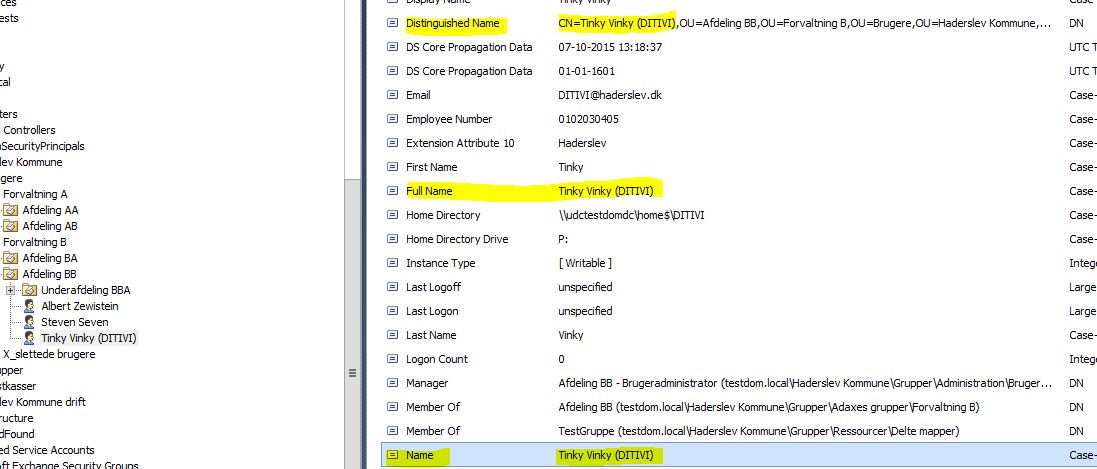Hello
Active Directory does not accept users with the same name, in the same OU. Surprisingly, in real life to employees may have the same name, like John Smith, in the same department.
In our current IDM system, we format the "name" by adding the samAccount property to givenName and sn, before creating the user account.
Like:
- John Smith (JS)
- John Smith (JSM)
Adaxes
However, I cannot format the "name" property in a Property pattern, as "name" is not selectable from the properties list.
Then I could format the "name" by running a script before the user is created, but I do not know how I get- and reference the values entered in the Create User form ?
If I change "name" after the user is created by a script, Adaxes also changes "Full Name" and Distinguished Name.
This must be an Adaxes thing, as these names does not change if I do the same thing on our production AD.
This is unwanted, as we only make the change to the "name" property, to overrule the limitation in Active Directory.

- Thanks in advance